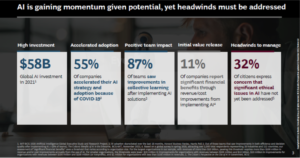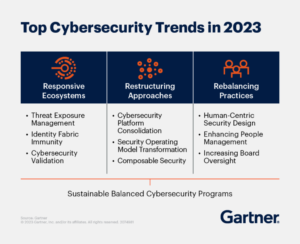This is the beginning of a new blog series, providing a glimpse into the current challenges for cybersecurity leaders and revealing how you might move forward to become a leader who inspires and connects.
I will share what I have learned from ongoing research for an upcoming book and more than 25 years spent in cybersecurity leadership roles in global organizations on both sides of the counter, buying and selling products and services, helping executive management understand cybersecurity, coaching CISOs to communicate better, and leading seasoned teams or hiring entire organizations from the ground up.
To begin, we’ll look at some facts and trends. As you already know, the threat landscape is getting worse every day. Cybersecurity challenges are in the media all the time. Every day is a day of a new data breach: ransomware, data losses, privacy breaches.
Based on research from global consulting firms, academic researchers, and cybersecurity experts, here are some statistics:
- An IBM report shows that every 39 seconds, a new attack occurs.
- An average of 3.86 million dollars is lost annually.
- 95% of the data breaches are human errors.
- 43% of cyber attacks are aimed at small businesses, but only 14% are prepared to defend themselves, according to Accenture.
Insurance carrier Hiscox revealed that these incidents cost businesses of all sizes $200,000 on average. Over half of all small businesses suffered a breach within the last year.
How does AI affect the landscape?

Source: Artificial Intelligence: Ready to Ride the Wave?
(BCG Executive Perspectives, 2021)
In 2023, there was an increase of 135% in new social engineering attacks. This coincides with the broad availability of ChatGPT around late 2022.
In addition to these genuine threats within businesses, there is added pressure on leaders today.
Emotional Intelligence, Stress, and Burnout Challenges
We are going through the so-called Great Reorganization. Everything is changing at the office, at home, and in our lives. This New World of Work includes Hybrid Work arrangements, Remote Work, and a Work/Life Balance rethinking. This is causing friction, anxiety, and stress. What are the experts saying?
Unprepared Managers
We are hearing from our clients and the industry that organizations have a big issue…Their front-line managers aren’t trained or ready to be effective managers and leaders. And with increased layoffs, the problem is only compounding. Managers are left with more responsibility and more stress. And they aren’t well-trained to deal with these issues. Many people I talk to say, “We need to teach our managers the basics.”
Many organizations know this issue and are trying to solve it, yet they are confronted with the dilemma of buying or building a manager training program. On one hand, purchasing a program means there is a lack of customization – you can’t be sure if it will fit your culture. Plus, buying is expensive and time-consuming.

Source: Infographic by Orca HR Solutions, LLC
Front-line managers must go from being Individual Contributors to Effective Managers.
- Managers are struggling with a high level of stress due to layoffs, increased responsibility, and lack of resources.
- High turnover is related to a lack of training opportunities and development.
Front-line managers are failing their teams, themselves, and their organizations.
- $223B lost by US organizations in the past five years due to employee turnover.
- 40% of employees say their manager fails to have honest conversations about work topics frequently.
- 1 in 3 workers say their manager can’t lead a team.
- 28% of HR professionals’ time is spent addressing problems caused by poor People Managers.
Stress affects organizations in terms of lost productivity and medical costs.
- $300B in lost productivity and medical costs
In the next post in this series, we’ll look at the root cause of cybersecurity leader failures. Here are some of the trends in the industry to help move towards sustainable, balanced Cybersecurity programs.

Additional Resources:
- McKinsey Download “Great Attrition or Great Attraction”
- From Boston Consulting Group (BCG) – Future of Work
- Microsoft Guides on AI
- Gartner Report/Cybersecurity Trends
Resources:
- Click here for more on From Problem Solving to Solution Design
- Click here for a free chapter from the book.
- Are you offering solutions that matter? Click here for a free Solution Design assessment.
- Click here for additional articles, interviews and podcasts.
- Click here to schedule with authors.
